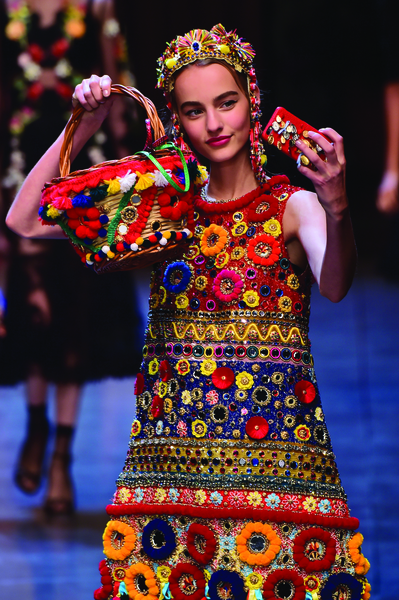With its bitter weather and litany of bad news, January always strikes iron into the soul. But thankfully, if you look for it, there is still some froth and fun to be found. It’s called the fashion industry.
As I write, men’s fashion week in Milan is already coming to a close. By the time you read this, hordes of Zoolander lookalikes will have descended on Paris. And very soon after that, my wife and her fellow fashion journalists will gear up for the annual fairy tale that is the haute couture shows.
Couture is the most admired incarnation of fashion, largely because it is all about craftsmanship. The official definition of an haute couture dress is one that is handmade in a Paris atelier. These delicate works of art sit at the peak of the notoriously pyramid-shaped luxury industry – the dream that drives sales of sunglasses and perfume at the base.
In today’s hipster-oriented world, where everything is obliged to scream authenticity, haute couture almost seems relevant again. But this leaves luxury fashion brands open to a familiar accusation: that they remain stuck in the 20th century and are allergic to technology.
Malentendu
In fact, that’s not the case. At least, not according to Eric Briones, director of strategic planning at Publicis Et Nous, associate professor at the Moda Domani Institute and editor of the forthcoming book Luxe & Digital, to be published in March.
“There’s a perception that the luxury industry despises technology, that it finds the internet and social media vulgar,” he says. “In fact, that idea has largely been created by the media.”
He points to the headlines generated recently when LVMH – the owner of the Louis Vuitton brand – recruited Apple executive Ian Rogers (who was behind Apple’s Beats 1 online radio station) as its chief digital officer. His mission is to expand the group’s online retail operation.
Says Briones: “A lot of the articles ran along the lines of ‘the luxury industry is finally embracing digital’. They presented the sector as conservative and wary of innovation. But history shows that there is no lack of compatibility between luxury and technology. Look at luxury watches, with their ‘complications’. Or the trunk that Louis Vuitton once designed for Houdini, which was a mechanical marvel.”
If luxury houses have been cautious about online retail, it’s partly because they’ve been waiting for the technology to catch up. Only lately has it been possible to create a fluid, elegant shopping experience online. The future of luxury may be bionic: a seamless blend of human skill and technical wizardry.
This cross-fertilization of luxury and digital was already apparent at recent fashion weeks. In New York last Fall, Intel sent drones to hover over runway shows.
Shortly afterwards, the Dolce & Gabbana show in Milan featured models taking selfies on the runway. This was theatre, but it mirrored a new reality. My wife told me: “It’s harder to get a front row seat at the shows now because they’re all filled with Instagrammers. If you’re a fashionista with thousands of followers on Instagram, you’re considered far more influential than a journalist.”
In Milan only last week, several fashion shows were mobbed by fans trying to get a glimpse of model and Instagram phenomenon Lucky Blue Smith (@LuckyBSmith), as well as model and Vine star Cameron Dallas (9.1 million followers). Less influential models looked vaguely irritated. (“Instagram’s young stars cause a frenzy”, International NY Times, January 21.)
Burberry, under its young chief creative officer Christopher Bailey, has become well-known for embracing social media. This is smart marketing, according to trend-tracker James Wall in a report from PSFK. “Rather than show off through physical goods, like previous generations, customers today are expressing their identities through shareable and unique experiences,” he writes. (“How brands bring their products to everyone”, PSFK.com, January 20.)
From virtual fitting rooms to streaming runway shows, high-end fashion brands are using digital to snare newly wealthy millennial consumers. For example, Burberry premiered its Spring 2016 collection on Snapchat.
The collusion between luxury and digital works both ways. Note the partnership between Hermès and Apple, who’ve launched a co-branded series of watches with “finely crafted” leather straps. It feels as though, having failed to position its watch as a luxury product in its own right, Apple has reached for a heritage luxury brand in order to add the necessary air of refinement.
The arrival of former Burberry CEO Angela Ahrendts to head the retail team at Apple in 2014 was perhaps the first sign that these two industries were drawing closer together. As Eric Briones says: “No doubt the technology industry can teach the luxury sector a thing or two. But in terms of marketing, I think the tech giants are learning a great deal from luxury.”




